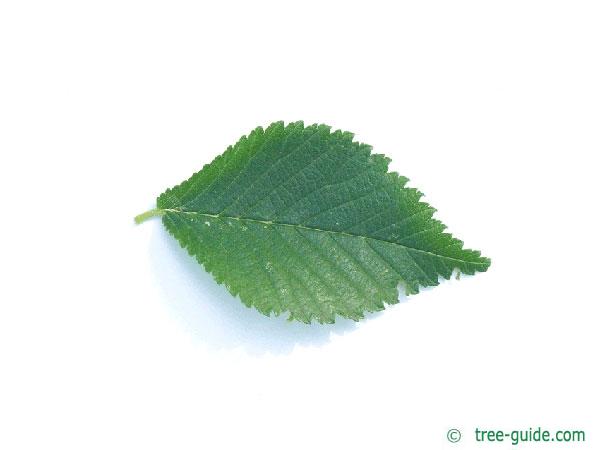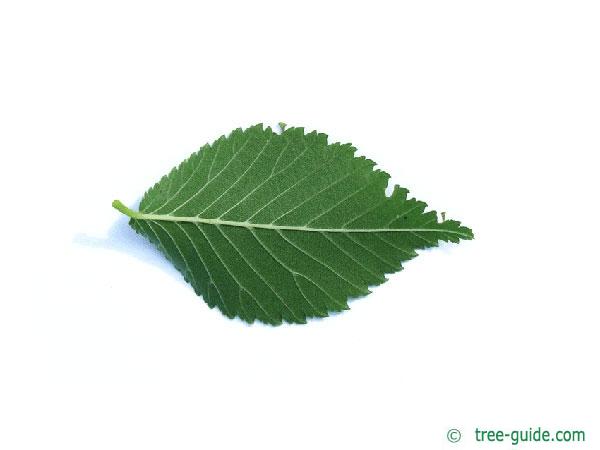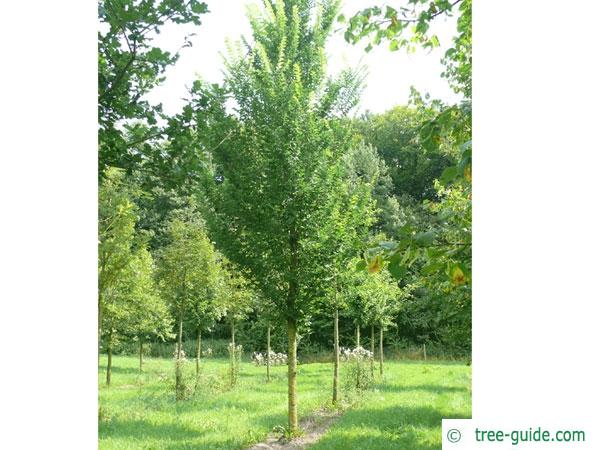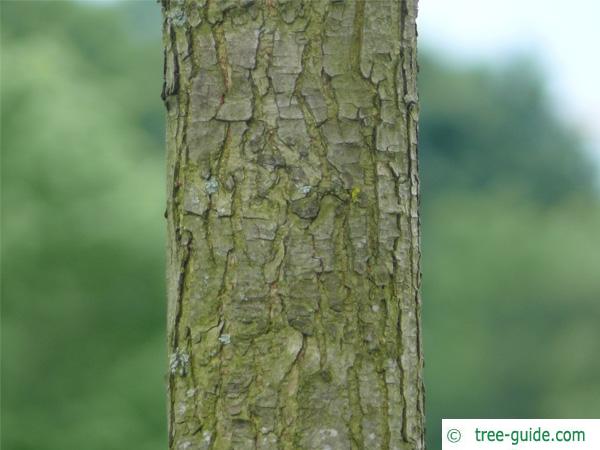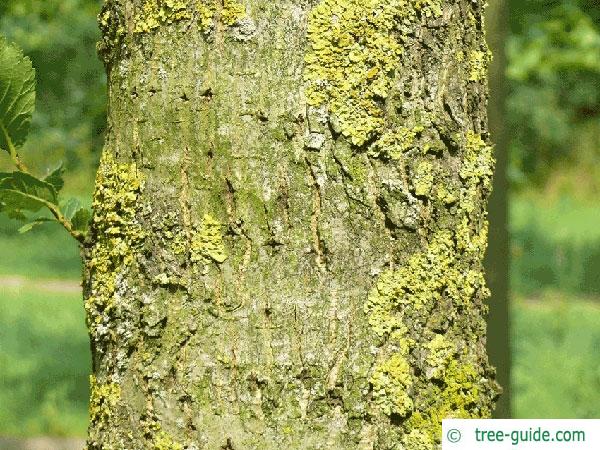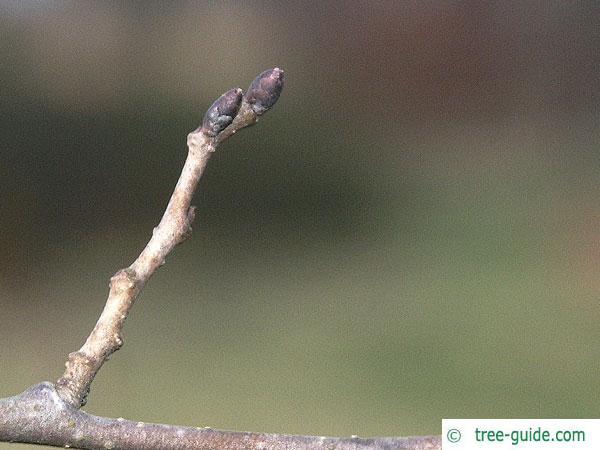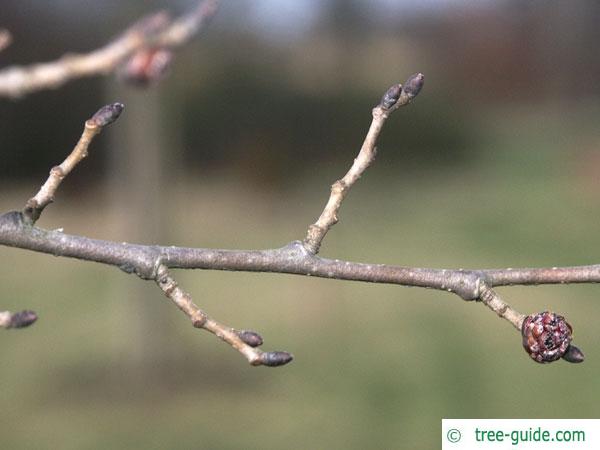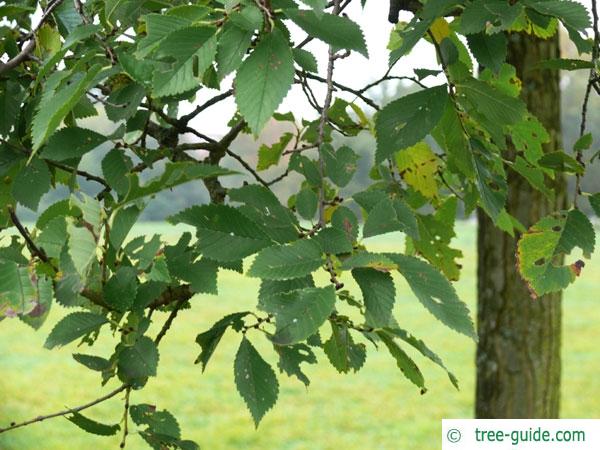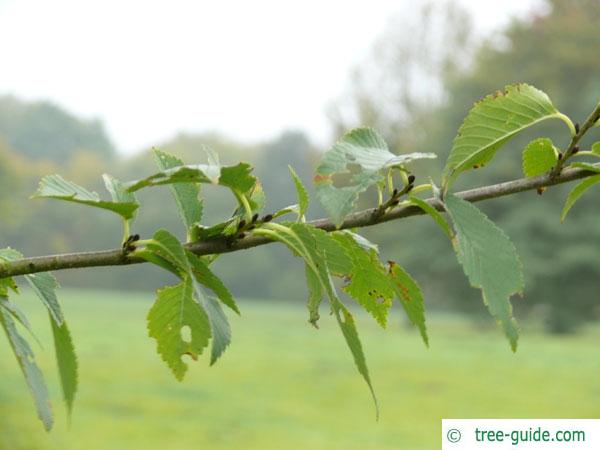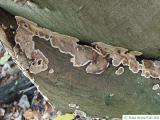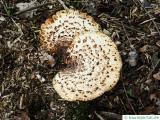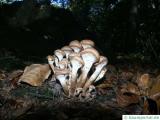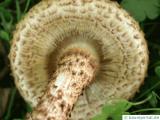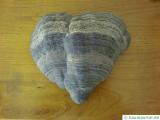Basisdaten
The Dutch elm is widespread in Europe. The elm is a hybrid between the Wych Elm (Ulmus glabra) and field elm (Ulmus minor).
Tree profile
The leaves of Dutch elm are slender egg-shaped with a long tip, have an asymmetrical leaf base and are up to 7 cm (2.8 in) long with a short petiole. The leaf margin is double serrated.
The yellowish flowers are short stalked and rather inconspicuous.
The fruits are samaras, elliptical with broad wings.
Young twigs are hairy and red-brown. The buds are brown, ovate, hairy and protruding.
single tree or planting in groups, parks, urban green
Elms additional information
overview leaves |
overview fruit | overview trunk
overview winter | overview trees







